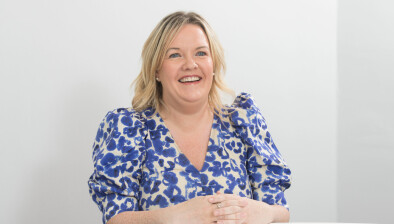Sarah Dodds: Protecting the future of family farms amid inheritance tax challenges

Sarah Dodds
The first Budget under the Labour administration was feared by business and nowhere more so than in the farming community where the recent announcements will have a devastating effect, writes Sarah Dodds.
As an accountant and business advisor, but more importantly a farmer’s wife with a young family, the news, while not unexpected, is very concerning.
It is time to consider some difficult decisions. Do I want my family to continue the farming way of life with its unpredictable income, reliance on the ever-changing and erratic climate within an industry facing an uncertain future? Will my sons even have the opportunity to take on the family farm at the next inevitable generational change or will the assets and ‘tools of the trade’ quickly diminish as family farms are forced to sell their tools in order to clear death duties? While there are difficult planning decisions which can be made, is continuing to farm merely delaying the inevitable?
Despite a smokescreen about the number of farmers who might be affected by the Inheritance Tax (IHT) changes (based on out-of-date statistics and the fact that there is a large number of individuals who own a small area of agricultural land, there are four unarguable statistics:
- There is about 17.6m hectares of agricultural land in the UK.
- 15.4m hectares of that land is within holdings of more than 50 hectares
- Even ignoring machinery and working capital, under the new IHT rules this will equate to an IHT charge of £108 billion every generation, or about £3bn a year.
- £3bn is about half of the total income from farming.
(source: Agriculture in the UK, updated February 2024)
Looking at individual farms, the average size of a farm in the affected group is 218 hectares or 540 acres. These are the real “family farms” and at today’s prices such a farm would face an IHT charge on the land alone of almost a million pounds every generation. The figures above also ignored the effect of bringing undrawn pensions into the IHT net, which will particularly impact on those holding farmland within a SIPP.
Set against that background, what can be done?
In most cases, for the smaller units the position can be at least mitigated by some rapid restructuring. Thankfully many of the useful tax-saving tools such as CGT holdover, rollover and uplift on death together with IHT PETs are still available, but with ominous warnings of another £9bn black hole in the future, and an average age for UK farmers of 59, time may be of the essence. For larger farms, sometimes with multiple businesses, the process will be more complex.
Clearly every farm is different, but once the IHT exposure can be established, a succession plan needs to be agreed and implemented as a matter of urgency. While it is entirely possible that a new government will be in place at the end of five years, it would be rash to assume that the first action of an incoming regime would be to rip up a lucrative source of taxation, particularly if saddled with the increased debt and the continued low economic growth which commentators are now predicting.
Reorganisation is likely to include a number of options including land transfers, new partnerships, gifts, tenancies and trusts.
For some, there may be an argument in favour of moving at least some of the business into a new limited company.
As ever, there will be concerns about family relationships and income pressures, and one still needs to bear in mind the danger of “letting the tax tail wag the business dog” – what has changed is that without doing something soon, there will be no business dog.
Reorganisation along these lines may be difficult. But the tax risks currently faced are existential, and greater than any which we have seen for the last 50 years.

Sarah Dodds is partner and head of agriculture at MHA, which has offices in Edinburgh and Aberdeen







